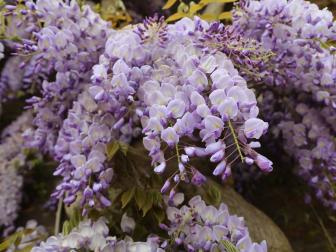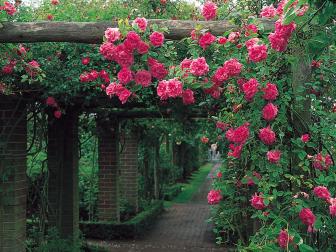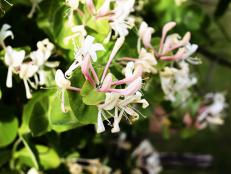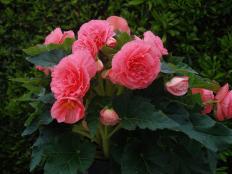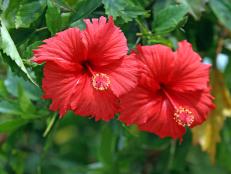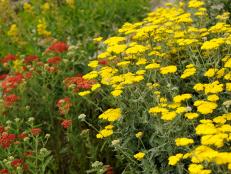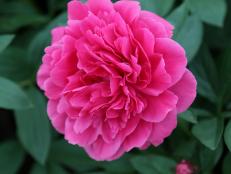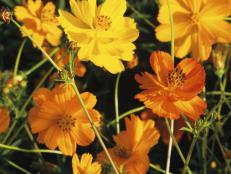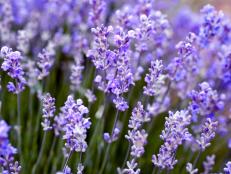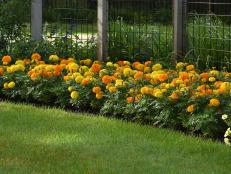How to Choose, Plant and Grow Flowering Vines

When you’re ready to grow up—that is, grow a plant on a trellis or other support—consider a flowering vine. Vines aren’t just for gardeners with limited space who want something that will twine, cling or otherwise reach for the sky. They’re also useful for screening a view, accenting a post or wall, shading a deck or other structure and providing flowers or fruit.
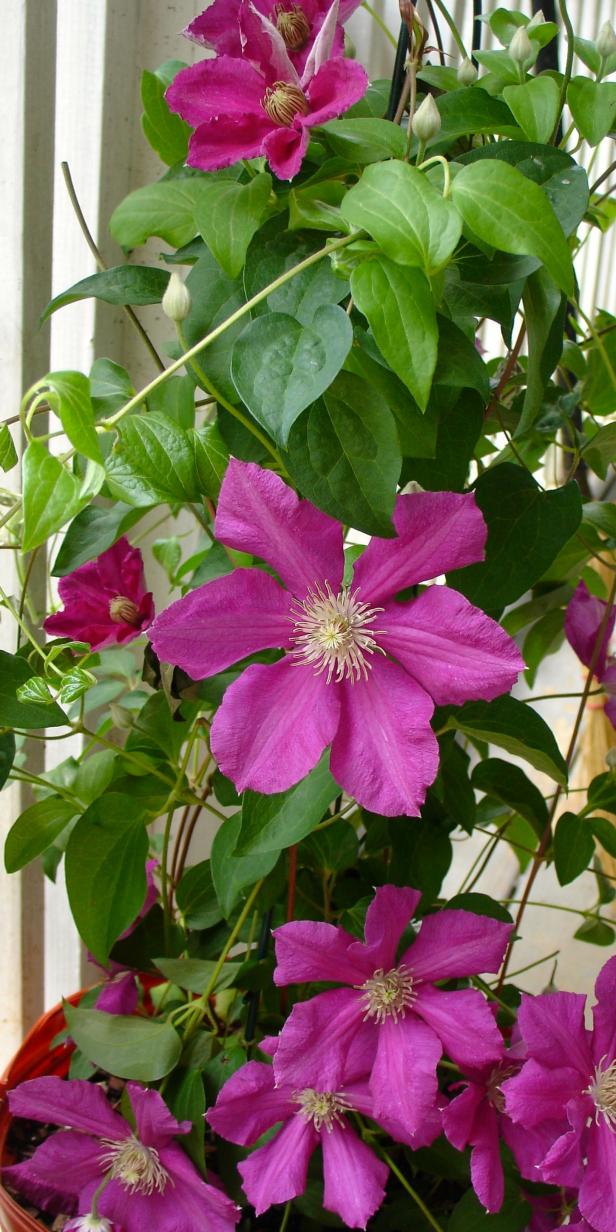
Photo by Lynn Coulter
How to Choose Flowering Vines
Think about how and where you’ll use your vines before you go shopping.
A pink clematis is beautiful when grown on a mailbox post, but by the time the vine is brown and bare in winter, it’s downright ugly. That may not matter at the end of your driveway, but you might prefer an evergreen for a space that’s used year-round. A star jasmine vine, for example, would open fragrant, white flowers in spring but keep its green leaves throughout the rest of the year.
13 Flowering Vines for Year-Round Color 13 Photos
Flowering vines aren't just for gardeners with limited space. See some of our favorites for color through the seasons.
Decide what the vine will grow on, too. Chinese wisteria is a showstopper with blue, mauve, purple, or white blooms, but its heavy, woody stems can pull down supports that aren’t firmly anchored in the ground.
To find the right support, check the vine to see whether it climbs by twining, like honeysuckles; by attaching with tendrils, like sweet peas and passionflowers; or by latching on with aerial rootlets, like climbing hydrangeas.
The Best Vines to Grow on Arches and Pergolas 12 Photos
Give your yard picturesque beauty by draping structures with beautiful, easy-growing vines.
For vines that twine or climb with tendrils, you’ll need a trellis, arbor or similar structure. You can also train these vines to grow on strings, wire, lattices, fence or slender poles tied together in a teepee shape.
Vines with aerial roots need to grow on or near surfaces they can grab onto, such as brick or stone walls. But be careful: those tiny roots can get into tiny spaces and crevices, eventually causing bricks and other materials to crack and crumble. To avoid damage, grow aerial-rooted vines on trellises or lattices that are installed just in front of your wall so the vine doesn’t actually touch it.
For flowering vines that sprawl, such as climbing roses, use garden ties or stretchy fabric, like old pantyhose, to help them get established. Their thorns can help them hook onto various supports, but you do have to tie them on. The canes themselves don’t twine, twist or produce aerial roots.
18 Valuable Vines to Plant in Your Garden 19 Photos
Screen your porch with vines for privacy, or let them hide an unwanted view or add romance to an arbor. The right vine makes any garden special.
Decide whether you want a perennial vine—one that will come back year after year—or an annual—a vine that will live for only one growing season. Unless you’re growing an annual, choose a vine rated for your hardiness zone.
Be sure your garden spot offers the growing conditions the flowering vine needs. Do you have full sun, shade or a combination? Is your soil moist or dry? If it needs soil in a certain pH range, can you amend your garden so it can thrive?
You’ll probably need to water on a regular basis for the first year after planting your vine, especially if there’s little rainfall. Unless your plant is drought-tolerant, try to plant it near a convenient source of water, or use soaker hoses or drip irrigation. (A garden hose or sprinkler is fine, too, but neither will deliver water as efficiently and economically.)
While most vines blossom in spring and summer, some bloom in fall. They include:
- Sweet autumn clematis (Clematis paniculata), for hardiness zones 4 to 9
- Coral honeysuckle (Lonicera sempervirens), zones 4 to 9
- Potato vine (Solanum jasminoides), zones 8 to 10
- Russian virgin’s bower (Clerodendrum tangutica ‘Golden Tiara’), zones 5 to 11
- Some varieties of bougainvillea, zones 9 and 10
- Morning glories (Ipomoea acuminate), zones 8 to 10
Some vines flower in winter, too. Choices for mild winter regions include:
- Chinese jasmine (Jasminum polyanthum), hardiness zones 8 to 11
- Carolina Jessamine (Gelsemium sempervirens), zones 7 to 9
- California pipevine (Aristolochia californica), zones 8 to 10
- Lilac vine (Hardenbergia violacea), zones 9a to 11a
If you want a flowering vine with edible fruit or flowers, consider grapes (although their flowers are small and not showy; make sure the variety you buy is hardy in your garden zone), or passion fruit vines (hardy in zones 9b to 11). Climbing nasturtiums (Tropaeolum majus), usually treated as annuals, bear pretty, edible flowers that add a peppery bite to salads. To avoid harm, never eat any part of a plant that has been treated with chemicals.
Planting Flowering Vines
Many vines are easy to grow from seeds, including cypress vine, moonflowers (Ipomoea alba), black-eyed Susans, and morning glories. Some seeds sprout faster if they’re soaked in water or nicked with a sharp knife before planting.
If your vines are tender annuals, wait until after the last spring frost to transplant them into your garden. For details on how deep and far apart to plant, and whether the vines need sun or shade, read your seed package. It may also give tips on watering, fertilizing, pruning and supporting the vine you’re growing.
If you buy a flowering vine in a container, read about it before you dig. Grapes, for example, may need to be planted more deeply than other vines, while clematis needs a site that offers shade for their roots and sun for their foliage.
In general, plant most vines in loose, well-draining soil. Dig a hole twice as big as the plant’s root ball and about as deep. Work aged manure or compost into the soil at the bottom of the hole.
Gently slide the vine out of the pot and put it in the hole no deeper than it was already growing. Make a basin from more soil over the root zone, so water won’t run off before it has time to soak into the ground.
Water thoroughly and deeply, and apply a generous layer of mulch, keeping it away from the stems of the vine.
Growing Flowering Vines
Remember to keep your vine deeply watered during its first growing season, unless it’s a plant that prefers to stay on the dry side. Replenish the mulch as it packs down or begins to decompose, and fertilize or prune as your particular vine requires. You’ll find specific gardening instructions for most vines online or on their tags and labels.






